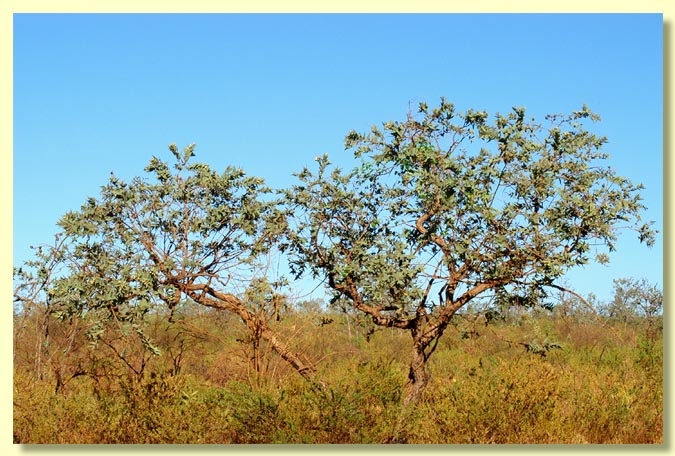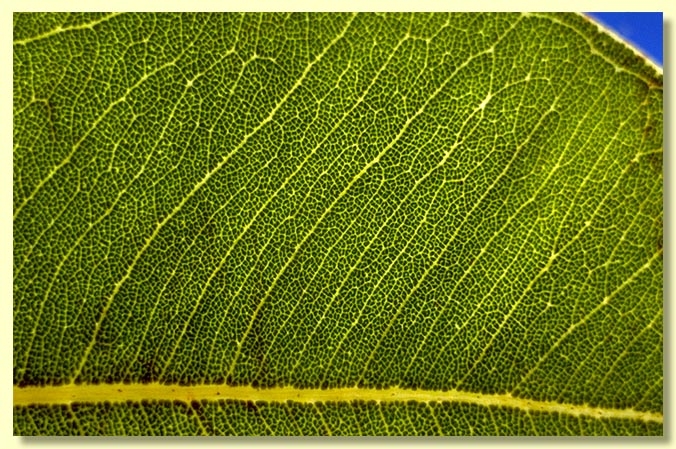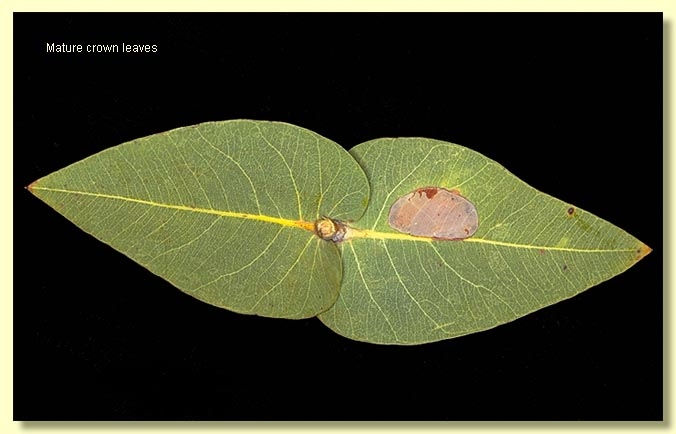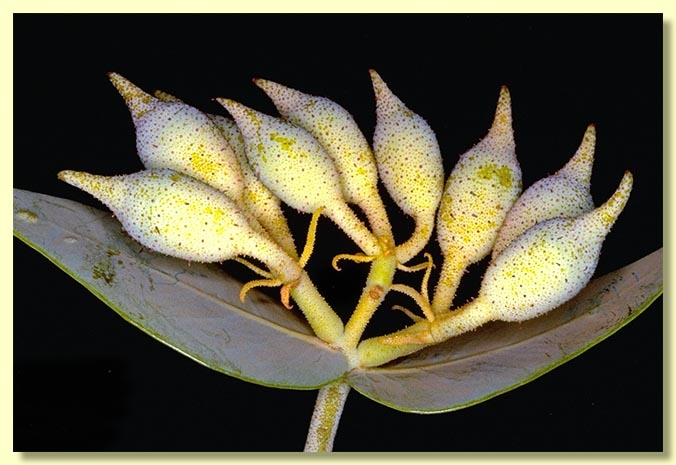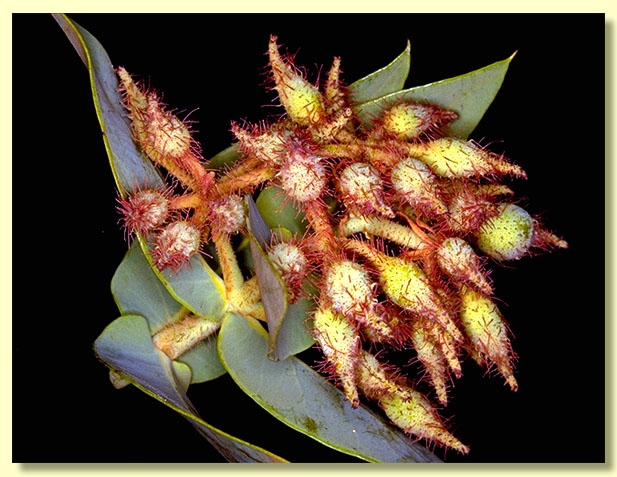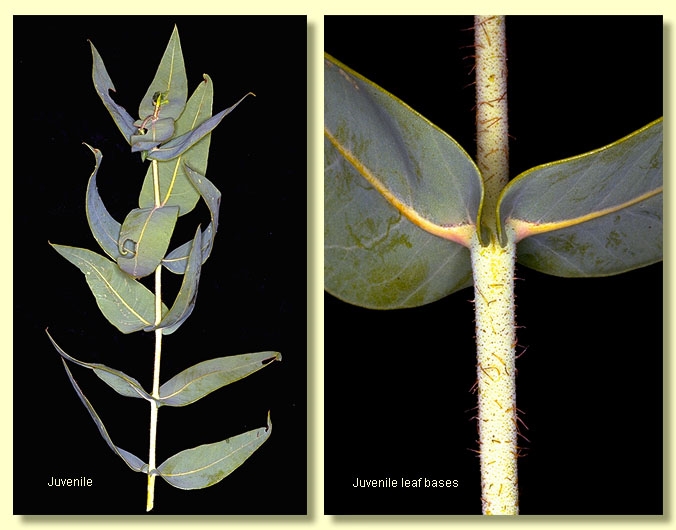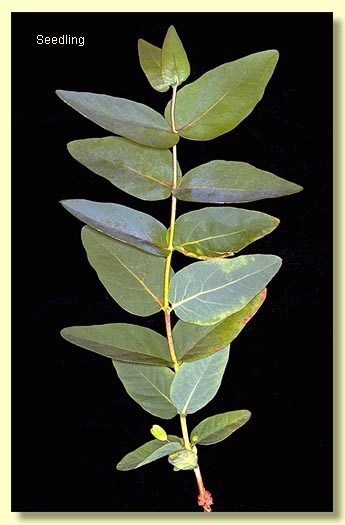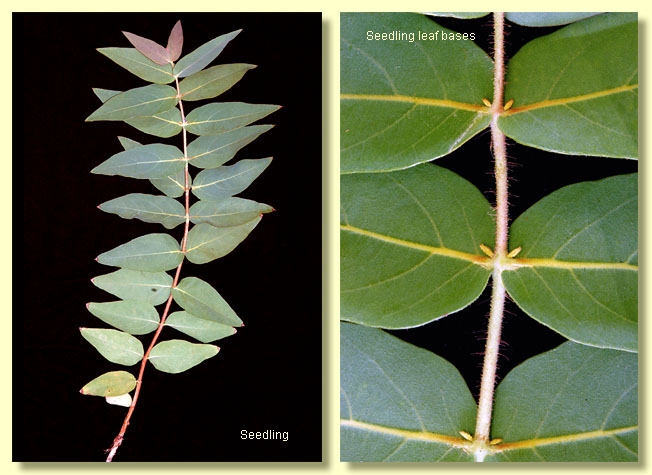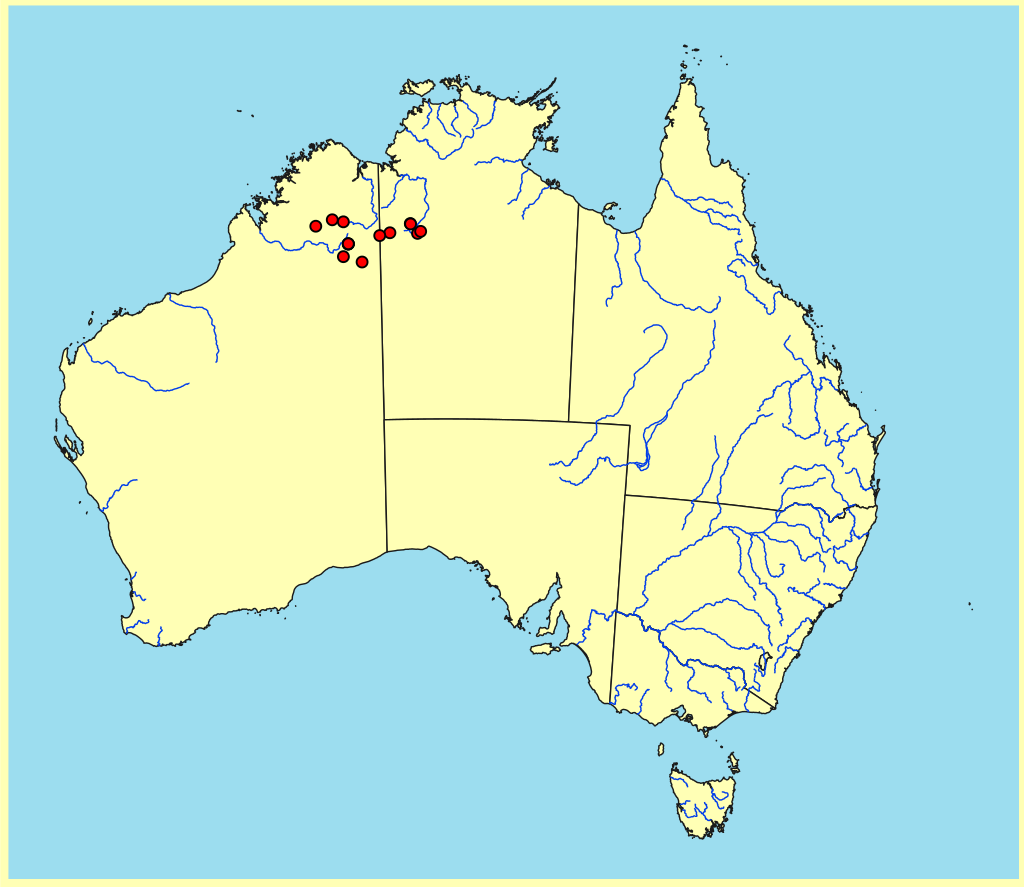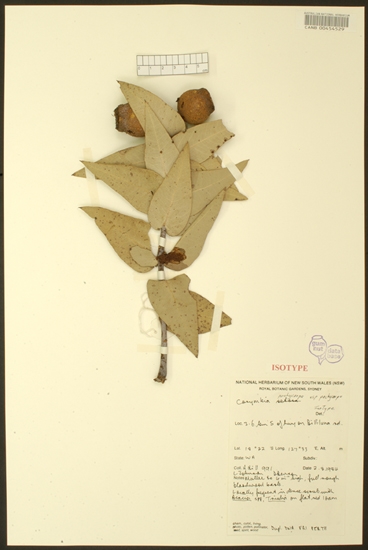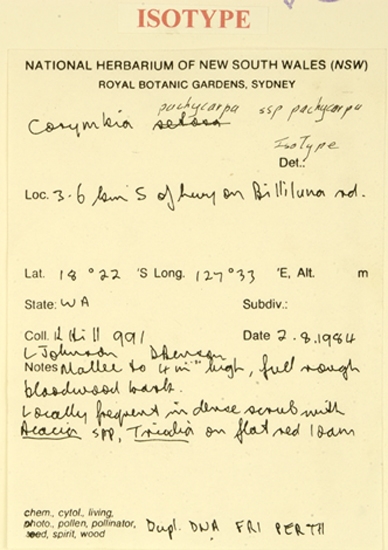Corymbia | Rufaria
Euclid - Online edition
Corymbia pachycarpa
Corymbia pachycarpa K.D.Hill & L.A.S.Johnson, Telopea 6: 359 (1995).
Tree or mallee to 6 m tall. Forming a lignotuber.
Bark thick, rough throughout, tessellated and fissured, light grey-brown to red-brown.
Branchlets lack oil glands in the pith; setose at least when young; often glaucous.
Juvenile growth (coppice or field seedlings to 50 cm): stems rounded in cross-section, setose, ?glaucous; juvenile leaves opposite and sessile, cordate to oblong to lanceolate, 4–13 cm long, 1.5–5 cm wide, stem-clasping, green, scabrid.
Crown of juvenile leaves, opposite, sessile; blade cordate to ovate to lanceolate, 4–12 cm long, 1.7–5 cm wide, base amplexicaul, margin entire, apex pointed or rounded and apiculate, concolorous, dull, yellow-green to light green to grey-green, smooth or slightly scabrid with the remains of short bristle-glands, side-veins at a wide angle to the midrib, reticulation very dense, intramarginal vein present, oil glands scattered island or apparently absent.
Inflorescence terminal compound but sometimes leafy and some umbels may appear axillary, peduncles rounded or angled, (0.5)1–3.2 cm long, buds 3 or 7 per umbel, conspicuously pedicellate (pedicels 0.7–2 cm long). Mature buds pyriform, 1.5–2.6 cm long, 0.8–1 cm wide, sometimes appearing whitish on the surface (?glaucous), very conspicuously setose with short to long bristle-glands, scar absent (both opercula shed together at flowering), operculum prominently beaked, stamens inflexed, all fertile, anthers versatile, dorsifixed, oblong, dehiscing by longitudinal slits, style long and straight, stigma blunt with a fringe of short papillae, locules (3)4, with 5, 6 or 7 vertical ovule rows on the placentae, or the rows indistinct. Flowers white.
Fruit pedicellate (pedicels 0.3–1.4 cm long), urceolate to barrel-shaped, with an obvious neck but the neck not flared outwards, 2.3–3.8 cm long, (2)2.5–3.3 cm wide, thick-walled, surface rough or smooth, disc descending vertically, valves (3)4, enclosed.
Seeds brown, 8–13 mm long, ellipsoidal with terminal wing, hilum ventral.
Cultivated seedlings (measured at ca node 10): cotyledons large, reniform; stems rounded in cross-section, setose with bristle-glands; leaves sessile, opposite throughout, ovate becoming cordate, 4.2–9.5 cm long, 2–4 cm wide, base rounded to ca node 8 then amplexicaul, apex pointed, dull, green, slightly discolorous, leathery, conspicuously setose for many pairs or sometimes sparsely setose until ca node 8 then ± glabrous. Note that bristle-glands may have a few short simple hairs on them or be unadorned.
Flowering has been recorded in December.
A stunted tree or mallee confined to arid areas of northern Western Australia and the adjacent Northern Territory. It is found from the Great Sandy Desert east of Lake Auld north to near Halls Creek and east through the northern fringes of the Tanami Desert to Hooker Creek and near Wave Hill. Corymbia pachycarpa has thick rough, fibrous, tessellated or fissured bark, young branchlets rough to touch, a crown of sessile opposite juvenile leaves that may feel rough or ± smooth, long-beaked buds that bear long or short bristles (setae), and thick-walled fruit. It occurs on stony red loams or red sands.
C. pachycarpa is closely related to C. setosa, C. sphaerica, C. dunlopiana, C. chartacea, C. papillosa, C. deserticola (with two subspecies), C. zygophylla and C. cadophora (with two subspecies). These species form a coherent group characterised by having a crown of opposite, juvenile leaves with true adult leaves not being formed. Setae are present at least on new season's growth and in some species persist on mature crown leaves or weather to leave the leaves feeling sandpapery or smooth. These setae are multicellular "bristle-glands". C. pachycarpa is distinguished within this group of species by the combination of crown leaves slightly sandpapery to smooth when mature, always longer than wide and with an acute apex, buds that are prominently setose with at least some very long setae, a beaked operculum, white flowers, and fruit longer than wide and contracting to form an obvious neck. Within its natural range in the arid zone the species most likely to be confused with C. pachycarpa is C. sphaerica, which has virtually glabrous buds and smooth (glabrous) leaves, and fruit that are isodiametric (more or less globose). C. zygophylla, which occurs further west and south-west, differs in having shortly pedicellate buds which are smooth to slightly warty (not setose) and have a rounded to conical operculum, not beaked.
Hill & Johnson (1995) described two subspecies, C. pachycarpa subsp. pachycarpa and C. pachycarpa subsp. glabrescens, separated on the basis of setose versus virtually glabrous crown leaves, and also on leaf size. Leaf dimensions show considerable overlap between the two subspecies, and setae density on the crown leaves varies between plants at a locality. Hence the two subspecies are not recognised here.
MORE ABOUT CORYMBIA
MORE ABOUT RED BLOODWOODS
Corymbia pachycarpa: Greek pachy, thick and karpos fruit, referring to the thick-walled fruit.


